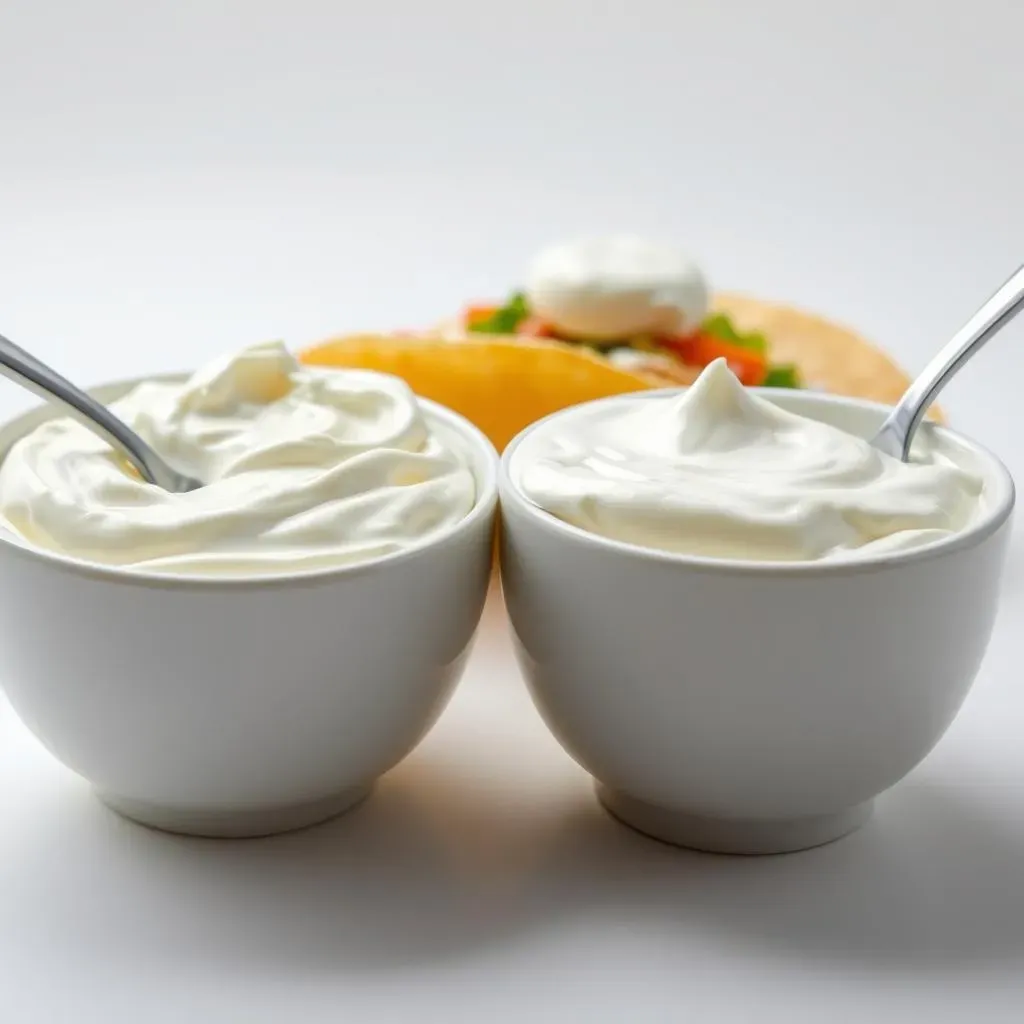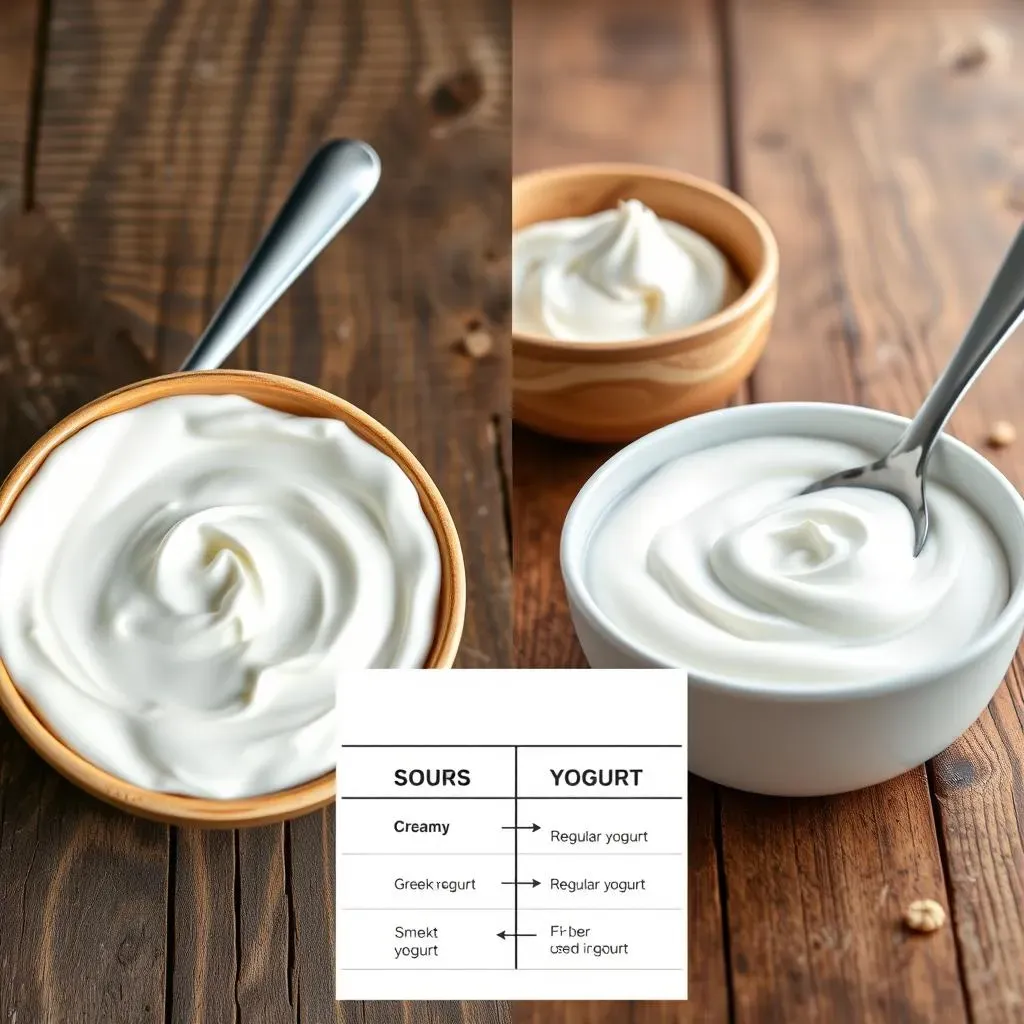Table of Contents
Ever find yourself staring into the fridge, recipe in hand, only to realize you're out of sour cream? It's a kitchen conundrum we've all faced. But here's the good news: you probably have a fantastic yogurt substitute for sour cream already chilling in there! Yes, that plain, unassuming tub of yogurt can be your culinary superhero. This article isn't about complicated kitchen hacks; it's about using what you've got to get the job done. We will explore why yogurt is such a great stand-in, how to use it without messing up your recipes, and what differences you might notice in taste and texture compared to traditional sour cream. Get ready to unlock a simple swap that could change your cooking game and maybe even make you a little healthier. So, grab your spoon, and let's get started!
Why Yogurt Makes a Great Sour Cream Substitute

Why Yogurt Makes a Great Sour Cream Substitute
Okay, so you're probably wondering why yogurt is such a champ when it comes to replacing sour cream. Well, it's all about the texture and tang. Both sour cream and yogurt have that creamy, slightly acidic vibe that makes them perfect for dolloping on tacos or stirring into sauces. The magic lies in the fermentation process; it's what gives both their signature tanginess. Plus, if you opt for Greek yogurt, you're getting an even thicker consistency, which is super close to sour cream and packs extra protein. It's like a healthy upgrade without sacrificing the flavor or texture we crave.
How to Use Yogurt as a Sour Cream Substitute

How to Use Yogurt as a Sour Cream Substitute
Okay, so you're sold on the idea that yogurt can be a sour cream stand-in. But how do you actually use it? It's easier than you think. For most recipes, you can do a straight swap: one cup of sour cream equals one cup of yogurt. If your recipe calls for a thinner consistency, like in a dressing, just whisk in a little bit of milk or water to get it to the right pourable thickness. You might want to start with a bit less liquid than you think you need and add more until you hit that sweet spot. And if you're worried about the tang being too strong, try using a mild yogurt, or even a mix of yogurt and a touch of mayo to mellow it out. I did a test run last week, swapping yogurt into my enchilada sauce, and no one at the table noticed the difference, they even asked for seconds!
Sour Cream | Yogurt Substitute | Tips |
|---|---|---|
1 cup | 1 cup | Use plain, unsweetened yogurt. |
For thinner consistency | Add milk or water | Start with small amounts of liquid |
To reduce tang | Mix with a touch of mayo | Use mild yogurt. |
Yogurt vs Sour Cream: Taste and Texture Differences

Yogurt vs Sour Cream: Taste and Texture Differences
The Tang Factor
Alright, let's talk taste. Sour cream has that classic, rich tang, thanks to the lactic acid produced during fermentation. Yogurt shares a similar tang, but its intensity can vary quite a bit. Greek yogurt, for example, tends to have a sharper, more pronounced tang than regular yogurt. This difference isn't a bad thing, but it's something to be aware of when substituting. Sometimes, that extra zing from yogurt can actually be a welcome addition, adding a bit more complexity to your dish. It's all about experimenting to find what works best for your palate.
Texture Showdown
Texture-wise, sour cream is known for its smooth, thick, and almost velvety feel. Yogurt, on the other hand, can range from thin and runny to incredibly thick and creamy, especially Greek yogurt. That's why knowing your yogurt is key. The thickness of Greek yogurt is pretty darn close to sour cream, so it’s usually the best choice for a direct swap. Regular yogurt might need a little help, like draining off some whey through a cheesecloth or adding a thickening agent, if you want a similar consistency in your recipe. But don't let that extra step scare you, it’s not that hard and worth it for the results.
Feature | Sour Cream | Yogurt (Greek) | Yogurt (Regular) |
|---|---|---|---|
Tang | Classic, Rich | Sharp, More Pronounced | Milder |
Texture | Smooth, Thick, Velvety | Very Thick, Creamy | Can Be Thin/Runny |
Making the Call
So, when should you choose yogurt over sour cream? If you're looking for a healthier option, yogurt is a clear winner. It's packed with protein and probiotics, making it a nutritious alternative. Plus, it's often lower in fat and calories. But, if you're aiming for the exact taste and texture of sour cream, you might want to consider using a full-fat Greek yogurt and maybe adding a tiny bit of lemon juice or vinegar to mimic that specific tang. At the end of the day, it's about finding the balance that suits your taste and dietary needs. Don't be afraid to play around with different yogurts to see what you like best.
Wrapping Up Your Yogurt Swap
So, there you have it. Yogurt isn't just for breakfast anymore; it's a versatile and readily available yogurt substitute for sour cream. Whether you're baking a cake, topping a taco, or whipping up a dip, plain yogurt, especially the Greek variety, can step in with surprising ease. While you might notice a slight tang or a subtle difference in texture, these are often minor and can even add a unique twist to your dishes. The best part? You're likely adding a boost of protein and gut-friendly probiotics while you're at it. So, next time you're in a pinch, don't fret about missing sour cream. Reach for the yogurt and get cooking!